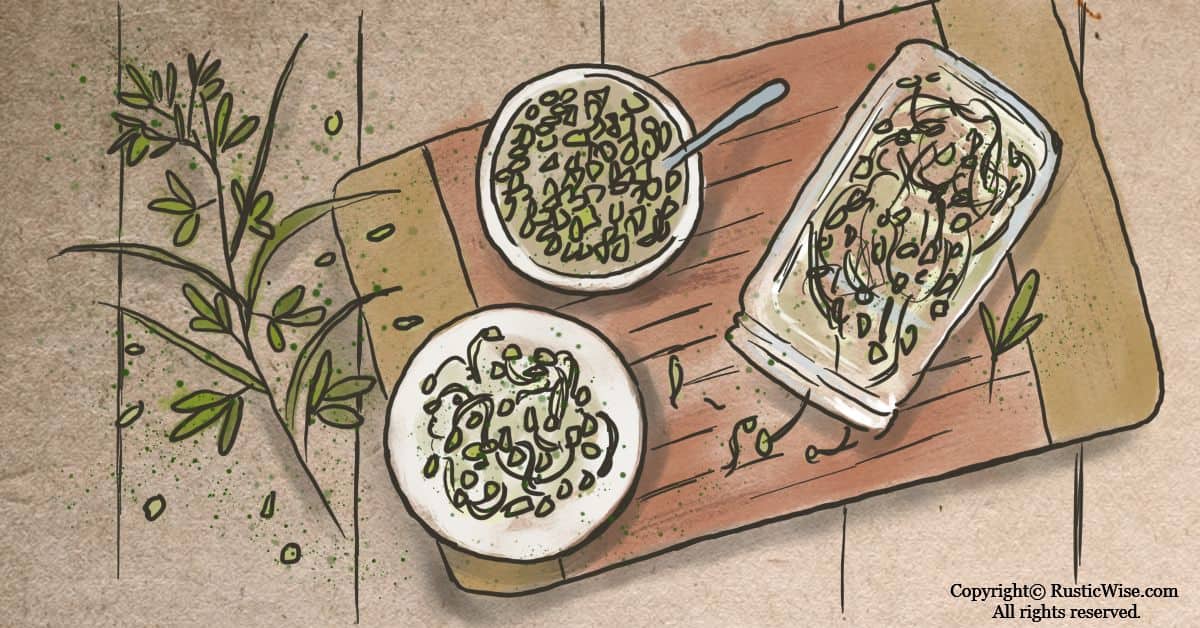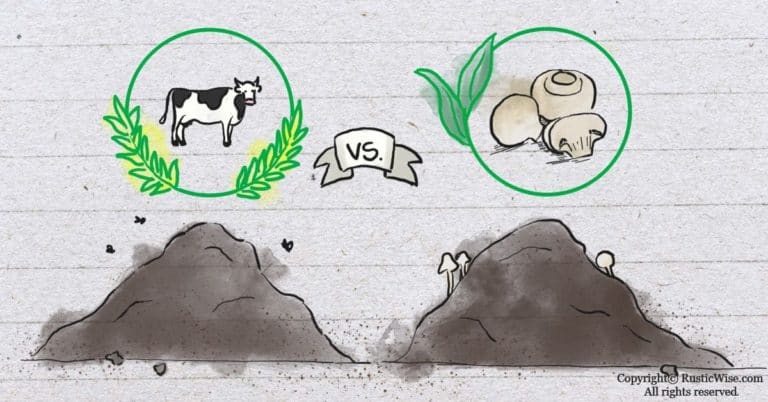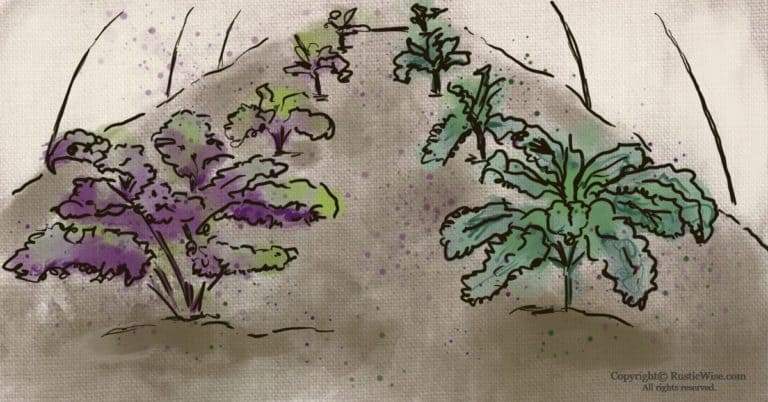A Guide To Sprouting Fenugreek and How To Use the Sprouts
While mung beans and alfalfa steal the spotlight in the sprouting world, fenugreek is not to be overlooked. Fenugreek (Trigonella foenum-graecum), also known as methi, is a widespread plant harvested as a herb and seed in India and throughout the Middle East.
Sprouting fenugreek allows you to benefit from its nutritional profile that’s rich in fiber, iron, and protein. It’s also tasty and easy to incorporate into a number of dishes. Using a simple sprouting jar, you can grow your own fresh sprouts in as little as 2–6 days.
With its maple-scented seeds and aromatic leaves, fenugreek has a slightly bitter-sweet flavor which makes it a great addition to curries. As a sprout, fenugreek has a similar “bitterness” as celery, with a pleasantly sweet aftertaste.
Just writing about fenugreek has got me hungry. Who said sprouts are boring?
Health benefits of fenugreek
Fenugreek is a type of legume which is part of the Fabaceae family. This family includes soybeans, green peas, and peanuts. Its seeds are used as a spice, its leaves as a herb, and it’s also grown as a leafy vegetable. And of course the seeds can be sprouted.
The nutritional profile of fenugreek seeds is a rich source of vitamins and nutrients, particularly fiber and protein. It also contains manganese, potassium, vitamins B6 and C, calcium, magnesium, and zinc.¹
High in protein, yet low in fat, fenugreek is great as part of a healthy, low-fat diet. One tablespoon of fenugreek seeds has 36 calories:
- Protein: 2.6 grams (5 percent DV)
- Fat: 0.7 grams (1 percent DV)
- Carbs: 6.5 grams (2 percent DV)
- Fiber: 2.7 grams (10 percent DV)
- Sugar: 0 grams (0 percent DV)
- Sodium: 7.4 milligrams (0 percent DV)
- Calcium: 20 milligrams (2 percent DV)
The use of this herb for healing purposes is common throughout northern Africa, the Middle East and India. Fenugreek is used in many medical applications, including:
- Managing diabetes: Fenugreek seeds may help to lower blood sugar levels in diabetics.²
- Soothing menstrual cramps: May help to reduce menstrual pain in women.²
- Improving sex drive: Fenugreek seed extract is used to improve or stimulate those with low sex drives.²
- Boosting lactation: In breastfeeding women, fenugreek extract is often used to help stimulate milk production. (Although results from scientific studies have been mixed.)³
- Treating external wounds: When used as a herbal remedy, the seeds are ground into a fine powder and used as a poultice to treat minor abscesses, burns, and boils.³
A 2022 study examining the cytotoxicity (cancer fighting abilities) of fenugreek sprouts and seed extracts shows that this herb shows some promise in suppressing metastasis in breast cancer cells through its many bioactive compounds.⁴
Why sprout fenugreek seeds?
The process of sprouting unlocks the many vitamins and nutrients that are inside the seeds. This enables our bodies to access and absorb more of the healthy good stuff. Sprouts typically have higher levels of nutrients than the fully matured version from the same plant.⁵
In the case of sprouting fenugreek, there’s more fiber in the sprouts than in the seeds. And most of us could use a bit more fiber in our diet, am I right?
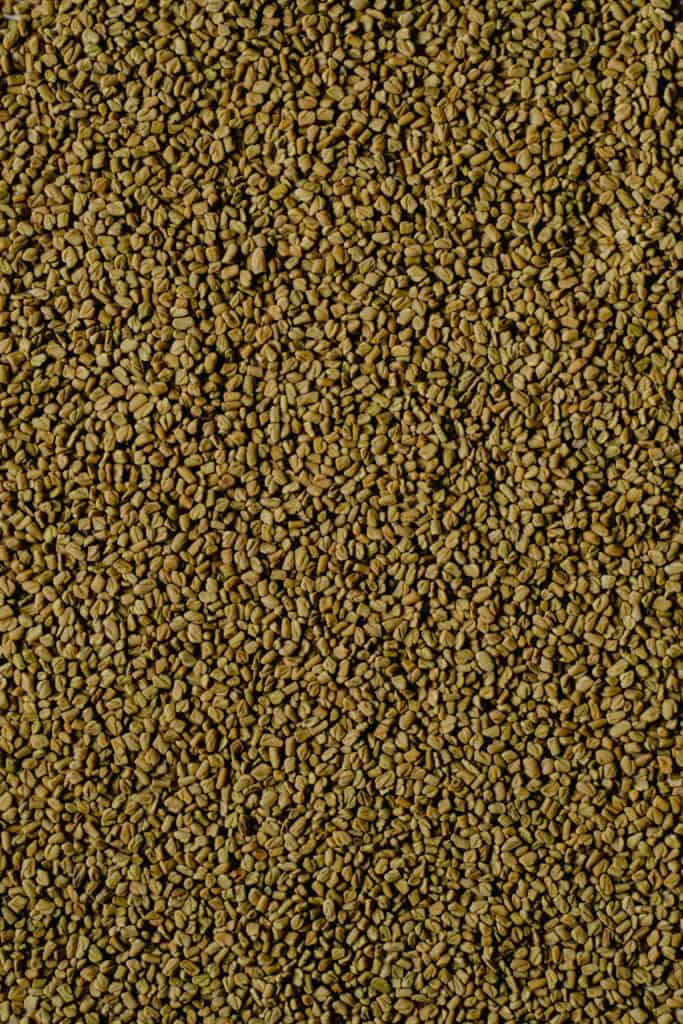
Credit: Eva Elijas / Pexels
A guide to sprouting fenugreek
There are several ways to sprout seeds, but I like to use a simple sprouting jar. Fenugreek seeds are quick to sprout using the jar method. Enjoy your sprouted fenugreek seeds in 2–6 days.
The methi seeds are golden brown and smell of maple syrup (yum!). The sprouts turn a pale green when exposed to sunlight.
We recommend buying certified organic fenugreek sprouting seeds from a reputable seed supplier. Sprouting seed purchased from a good supplier are free of harmful pathogens such as E. coli and salmonella. You’ll also get a better harvest if you’re sprouting from a batch of good seeds.
You’ll need:
- A sprouting jar. A one-quart glass mason jar with a permeable lid works well. You can easily DIY your own sprouting lid with a piece of cheesecloth, muslin cloth or mesh screen with a rubber band. Or, you could use your choice of a commercial sprouter and lid.
- Organic fenugreek seeds
- Clean, fresh water
1. Pre-rinse
Prior to soaking, I like to rinse seeds quickly under cool water to remove any debris.
2. Soaking
Measure out roughly 3–4 tablespoons per quart jar, or sprouter.
Soak fenugreek seeds in clean, lukewarm water overnight, or for 8–12 hours. Place your sprouting lid or cheesecloth fabric onto the jar. Soaking is an important step that kick-starts the entire sprouting process by coaxing a dormant seed to life.
With sprouting fenugreek, it’s important that the quality of water you’re using on your sprouts is of drinking quality. Depending on your local water source, tap water may be perfectly fine. Others with especially hard water may need to use filtered water to remove impurities.
Drain the soaked seed.
3. Rinsing and draining
Once your seeds have soaked, you can start the rinsing and draining process. Keep your sprouts in a cool place away from direct sunlight. I keep mine in a dark corner of the kitchen countertop away from windows.
Rinse your fenugreek seeds 2–3 times a day, or every 8–12 hours. Make rinsing your sprouts part of your morning and evening ritual, and you should have sprouting success!
Rinse your seeds with cool water under a running tap, or a nozzle sprayer. Tip your jar or sprouter so that all sprouts get their fair share of water. Ensure the sprouts get a good soaking.
Rinsing your sprouts not only hydrates, it also keeps them clean by infusing fresh oxygen, and washing away any harmful bacteria and metabolic waste.
Draining is an equally important step as excess sitting water may lead to mold growth in sprouts.
During the draining and rinsing cycle, it’s important to keep a relatively stable room temperature. Aim to keep room temperature at around 70 degrees Fahrenheit (21 degrees Celsius).
Tip: If your room temperature is too hot or too humid, this may also lead to mold growth, or smelly sprouts. To offset the hotter temperature, rinse with cooler water, and rinse more frequently.
4. “Greening” or light exposure (optional)
This step is optional. Some people prefer to keep their methi sprouts yellow. It’s best to taste the sprouts at this stage to see if you like the taste. If you do, there’s no need to green them.
But if you prefer greener sprouts, follow these steps.
After 2–3 days, or when the sprouts have developed their first green leaves, you can move them into the sunlight. The sunlight helps to give them a greener appearance.
If you’re sprouting fenugreek in a jar, you may notice that the sprouts in the middle are more yellow. This is totally normal, and the sprouts are perfectly edible.
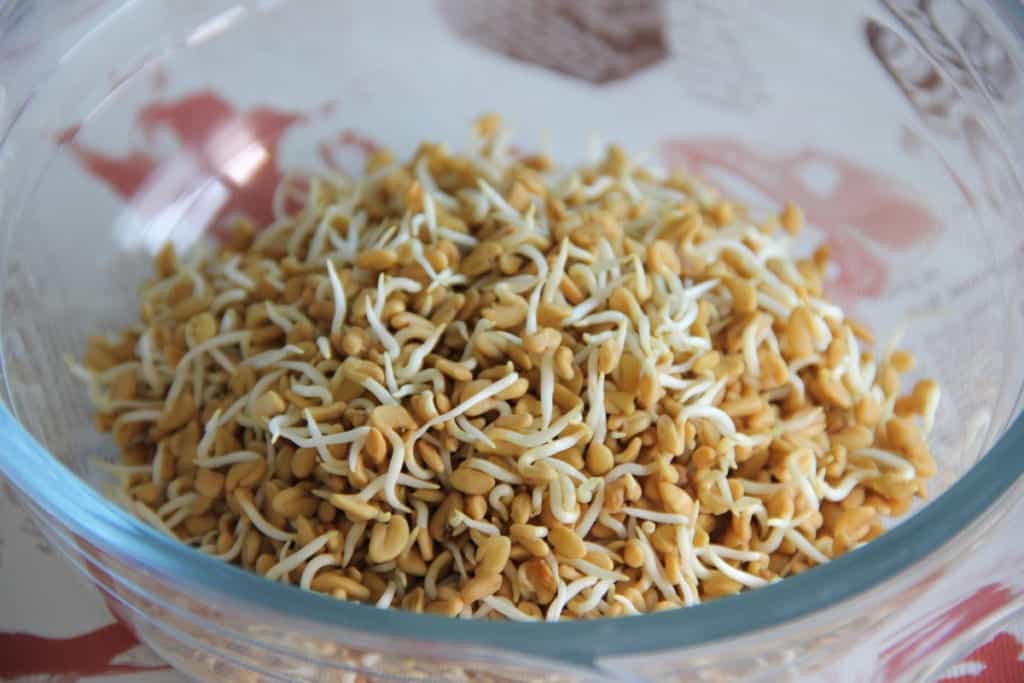
5. How to harvest fenugreek sprouts
Like many other homegrown sprouted seeds, harvest fenugreek according to your own taste preferences. There’s really no right or wrong, but many people prefer to harvest when most of the leaves are green.
You can harvest fenugreek anywhere between 2 and 6 days.⁶
To harvest, you’ll need to give it a final rinse before storing or eating.
You’ll need:
- A colander
- A clean basin
- Clean water
- A perforated plastic bag, or storage container with air holes
Fill a clean basin with clean, cool water. Take your sprouted fenugreek seeds by the handful and gently swirl in the water. This helps loosen any hulls plus other debris. The hulls float to the surface of the water.
Removing the hulls is optional. While the hulls are edible, many people don’t like their chewiness.
Once all the sprouts are clean, place in a colander and allow it to drain completely before refrigerating. For best results, we like to place the colander in a large bowl, and tip it at different angles until all the water is completely drained.
Excess water shortens the shelf life of sprouts, so be sure to dry thoroughly before storing. Store in either a perforated plastic bag (one with puncture holes), or a storage container with air holes. An airtight container may shorten shelf life!
The shelf life of homegrown sprouts: Homegrown sprouts may keep up to 1 week in the fridge, but best used within 2-3 days.
Fenugreek sprout safety
Before we dive into how to use and eat fenugreek sprouts, let’s first go over a few sprout safety tips.
Fenugreek in particular should be avoided by pregnant women as it may cause uterine contractions. Please speak with your doctor before consuming fenugreek.
While raw sprouts are typically considered safe for most people, certain people should avoid eating raw sprouts to be on the safe side. This includes:
- Pregnant or breastfeeding women
- Those with compromised immune systems
- Elderly
- Very young children
To avoid possible foodborne illnesses in sprouts, try cooking them first.
How do you eat fenugreek sprouts?
So now that you’ve gone through the work of growing sprouts, how exactly do you eat fenugreek sprouts?
The first thing is to rinse and drain any sprouts under cool water before eating.
The slightly bittersweet flavor of fenugreek sprouts makes it a great addition to many fresh and healthy dishes. Methi sprouts as they’re known in India, are a mainstay in Indian cuisine, and many middle eastern dishes. It’s a staple in many curry dishes and is often an ingredient found in curry powder.
Try using fenugreek sprouts in:
- Curries
- Salads as a base or garnish
- Sandwiches
- Juicing
- Sprinkling on soups or stews
- Stir fry
Need some inspiration? Check out these fenugreek sprouts recipes:
Sprouted Fenugreek Salad
This healthy and easy-peasy salad calls for cilantro, chilies, and tamarind to spice up fenugreek sprouts (via Food Pleasure and Health).
Fenugreek/Methi Sprouts Soup
A flavorful tomato-based soup with lightly cooked fenugreek sprouts is perfect for lunch (via Simple Indian Recipes).
Methi Dana Ki Subzi (Stir fried Fenugreek Sprouts)
Serve this traditional spicy dish with roti or rice (via Maayeka).
Related questions
What does fenugreek do for females?
Many herbal remedies using fenugreek have purported benefits for women, such as boosting milk supply in breastfeeding women, or soothing menstrual cramps. However, there are mixed results from studies illustrating the benefits of fenugreek for increasing milk production according to the National Center for Complementary and Integrative Health.⁷
While fenugreek found in foods (such as sprouted fenugreek seeds) are generally safe for most people, please consult with your doctor before consuming fenugreek supplements. Pregnant or breastfeeding women should not take fenugreek supplements.
What is a sprouting jar?
A sprouting jar is a container used to sprout seeds, grains, and legumes. The jar typically has a mesh or strainer lid to allow for drainage and air circulation. A one-quart wide mouth glass mason jar is a common sprouting jar size.
During sprouting, you start by soaking seeds or grains. After this, there’s a frequent rinse and drain cycle using fresh water, which allows the seeds to germinate and grow into small sprouts.
There are also commercial sprouting containers made of various materials, such as glass, plastic, or stainless steel, and come in different sizes to accommodate different amounts of sprouts.
👉 If you like this post, see our Essential Sprouting Guide: How To Grow Sprouts at Home. 🌱
Would you like more timeless tips via email?
Fun tips to help you live an independent, self-sustaining lifestyle. Opt-out at any time.


References
- My Food Data, Fenugreek Seed, https://tools.myfooddata.com/nutrition-facts/171324/oz/1. Accessed April 2023.
- WebMD, Fenugreek, Uses & Effectiveness, https://www.webmd.com/vitamins/ai/ingredientmono-733/fenugreek. Accessed April 2023.
- Plants For A Future, Trigonella foenum-graecum – L., https://pfaf.org/user/Plant.aspx?LatinName=Trigonella+foenum-graecum. Accessed April 2023.
- Khoja, K. K., Howes, M. R., Hider, R., Sharp, P. A., Farrell, I. W., & Latunde-Dada, G. O. (2022). Cytotoxicity of Fenugreek Sprout and Seed Extracts and Their Bioactive Constituents on MCF-7 Breast Cancer Cells. Nutrients, 14(4), 784. https://doi.org/10.3390/nu14040784
- Nourish by WebMD, Sprouts: Are They Good for You?, https://www.webmd.com/diet/sprouts-good-for-you#1. Accessed April 2023.
- Johnny’s Selected Seeds, Fenugreek Organic Sprouting Seeds, https://www.johnnyseeds.com/vegetables/sprouts/fenugreek-organic-sprouting-seeds-2870.html. Accessed April 2023.
- National Center for Complementary and Integrative Health, Fenugreek, https://www.nccih.nih.gov/health/fenugreek. Accessed April 2023.

Author: Josh Tesolin
Josh is co-founder of RusticWise. When he’s not tinkering in the garden, or fixing something around the house, you can find him working on a vast array of random side projects.

